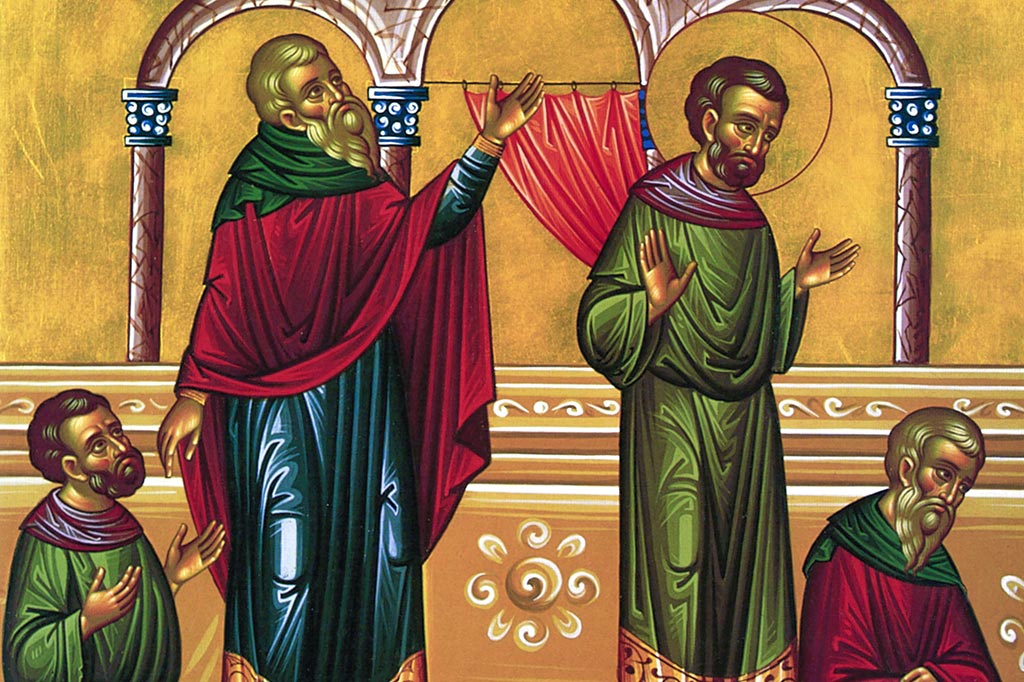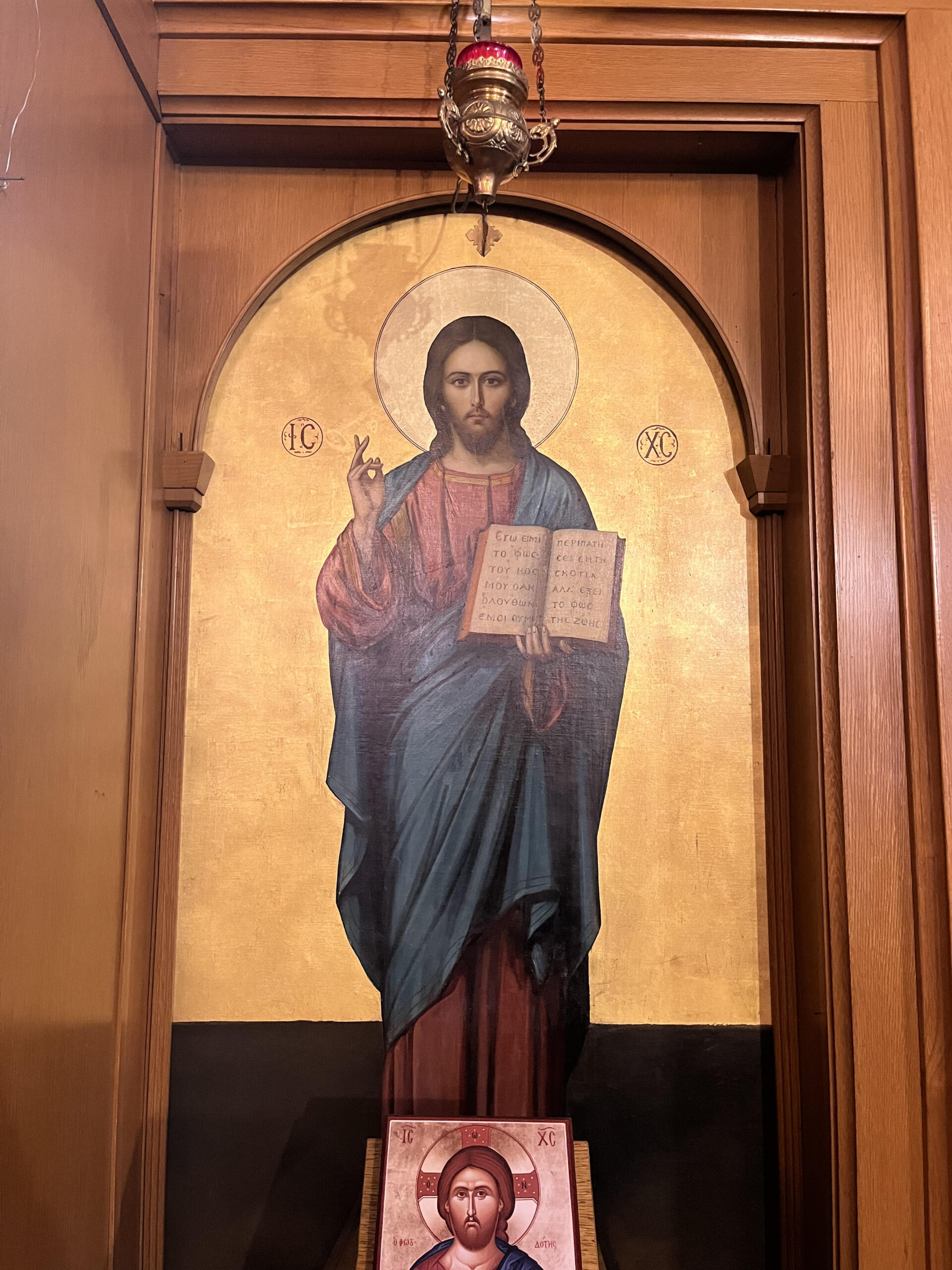Standing by the cross of Jesus were His mother, and his mother’s sister, Mary the wife of Clopas, and Mary Magdalene. When Jesus saw His mother, and the disciple whom He loved standing near, He said to His mother, “Woman, behold, your son!” Then He said to the disciple, “Behold, your mother!” And from that hour the disciple took her to his own home. After this, Jesus, knowing that all was now finished, said (to fulfill the Scripture), “I thirst.” This is the disciple who is bearing witness to these things, and who has written these things; and we know that his testimony is true. But there are also many other things which Jesus did; were every one of them to be written, I suppose that the world itself could not contain the books that would be written. Amen.
John 19: 25-28; 21: 24-25
Christ is Risen!
The feast of St. John the Theologian is celebrated on May 8, which this year is a Monday. Because both the Epistle and Gospel passages are so profound, we will reflect on both of them, with the Epistle first for May 8 and the Gospel on May 9, even though it is the day after the feast.
The Gospel read on the feast of St. John the Theologian reveals several things to us. First, only one of the twelve disciples remained at the cross watching the Crucifixion. We know that Judas had betrayed Christ and had hanged himself. We are told that all the other disciples fled. Only John, the beloved Disciple, remained. Three women were present including the Virgin Mary.
When Jesus entrusted His Mother to His disciple to care for her, this confirms that by this time Joseph, the protector of Mary and earthly father of Jesus, was deceased. Had he been alive, she would have been in his care. This bolsters the tradition that Joseph was an older man when the Incarnation happened. In the Orthodox tradition we hold that he was a widower, and had been previously married. Icons of the Nativity show Joseph in the lower corner and depict him as an older man.
In the moment where Jesus tells John to “Behold, your mother!” (John 19:27), I have heard it stated that this is the moment that the church was established. Some argue that the church was established when Jesus said to Peter, “you are Peter and on this rock I will build My church.” (Matthew 16:18) Others argue that the church was established on Pentecost when the Holy Spirit came down on the Disciples. In any case, this moment of Jesus telling John to look on the Virgin Mary as his mother is something that also hold significance for us, the modern day disciples. We are to look on the Virgin Mary, as well as the Church, as our mother, just as the Virgin Mary and the Church look upon us as children. (I remember a priest growing up who used to give a sermon on Mothers’ Day about our three mothers—our birth mother, the Virgin Mary and the Church).
Many times in the icons of St. John the Theologian, we see another man sitting in the corner transcribing what John is saying. This man is named Prochoros, and he is one of the Seventy Apostles. (There are two groupings of Apostles in the Bible, the 12 and the 70). Prochoros was John’s scribe (or secretary). John was not able to write and so whatever he “wrote“ was actually dictated to Prochoros. As all good scribes/secretaries do, Prochoros edited what John was saying. The phrase “we know that his testimony is true” (John 21:24) is evidence of Prochoros adding and editing. It is very unlikely that John actually used this phrase, especially the word “we”. He would have said “My testimony is true.” To say “we know that John’s testimony is true,” is evidence of another writer endorsing the man who was giving the testimony.
Finally, the last verse of this passage tells us that this Gospel account is not an exhaustive record of what Jesus did. This acknowledges for us that the other Gospels are valid. Each gives an account of things that Jesus did. The purpose of the Gospels was not to give an exhaustive account of the life and teachings of Christ, but as John writes John 20: 30-31, “Now Jesus did many other signs in the presence of the disciples, which are not written in this book; but these are written that you may believe that Jesus is the Christ, the Son of God, and that believing you may have life in His name.” One does not need exhaustive knowledge in order to believe something. To believe requires faith. The Gospels were written to tell us about Jesus in order to inspire our faith, which in turn inspires our work, and our purpose. One does need some knowledge in order to have faith, and the Gospels provide that knowledge. The faith and work then become our responsibility.
O Evangelist John, peer of the Angels and Virgin, Theologian taught by God, you correctly proclaimed to the world the immaculate side, which spouted the blood and the water, whereby we obtain life eternal for our souls. (Doxastikon of St. John the Theologion, Trans. By Fr. Seraphim Dedes)
Study God’s Word, the Gospels, in order to bolster your faith. Then let your faith inspire your works and give purpose to your life.

